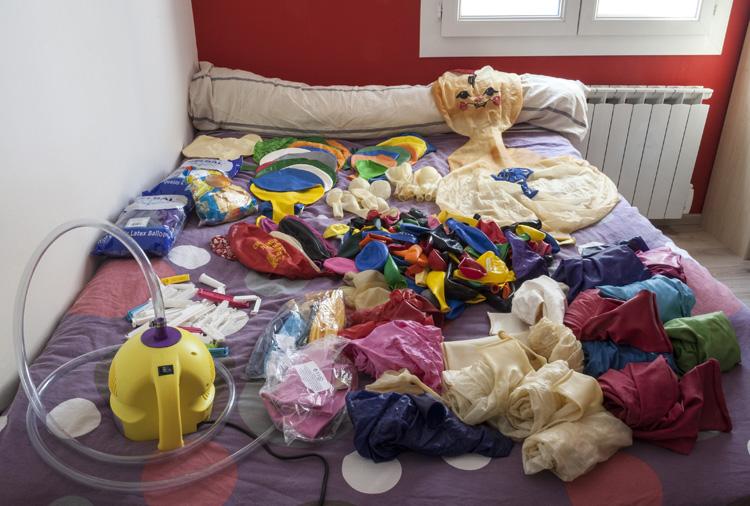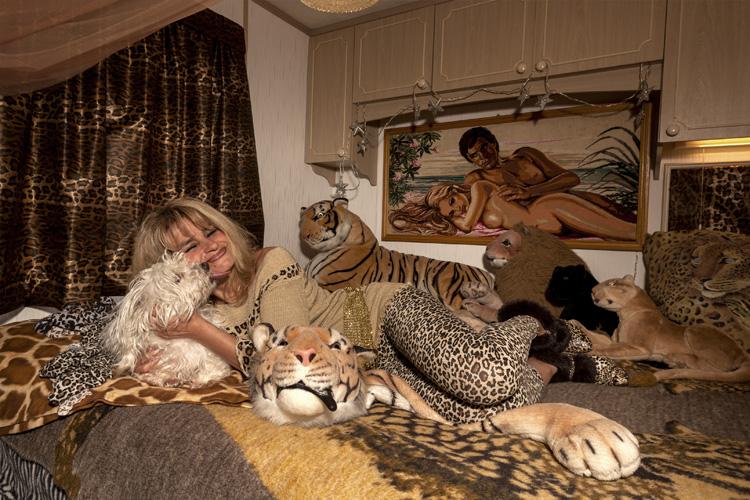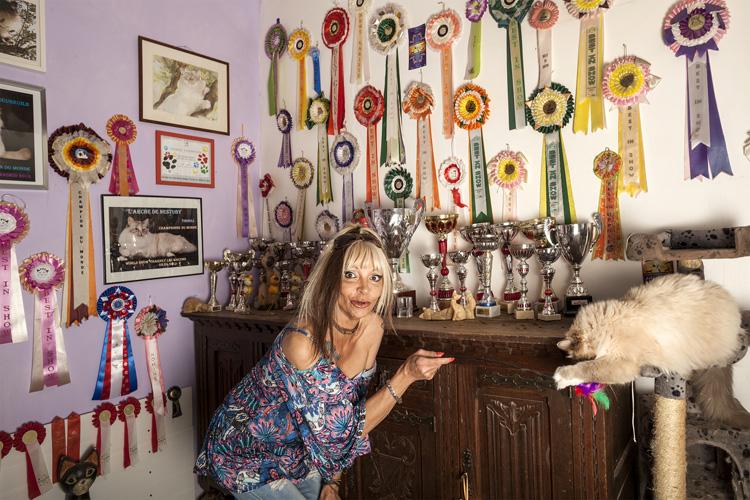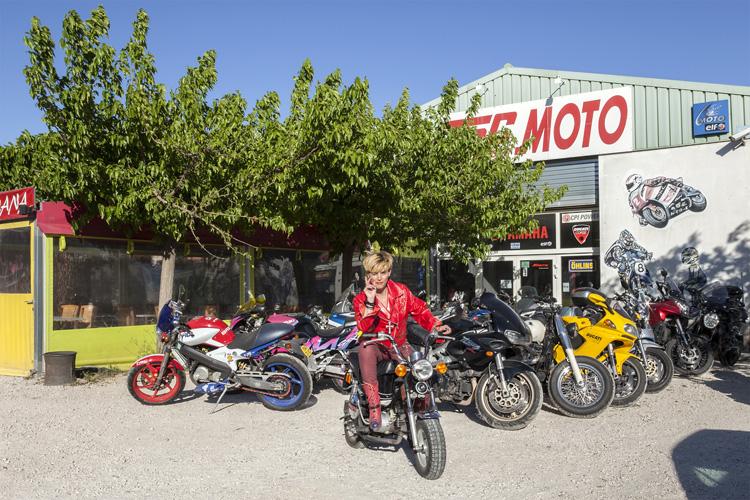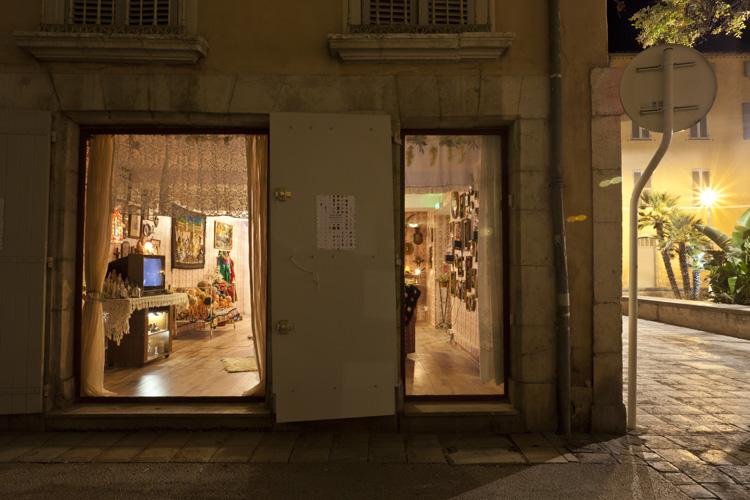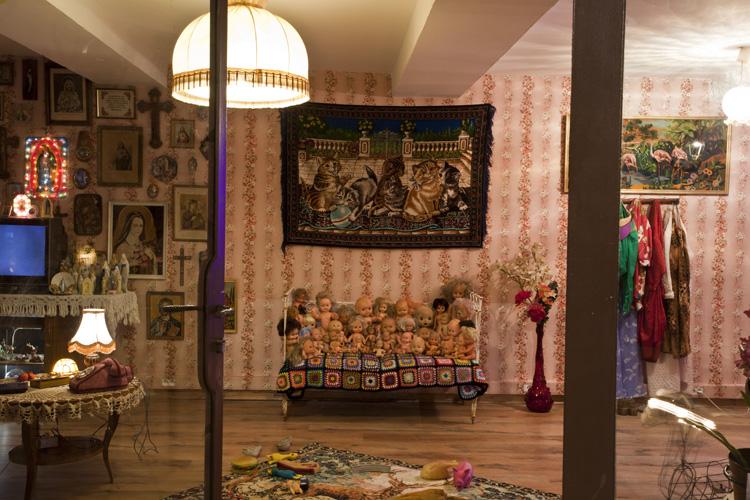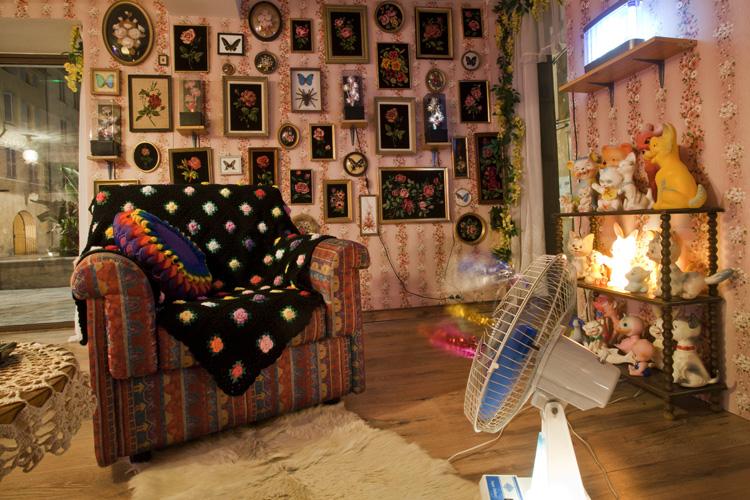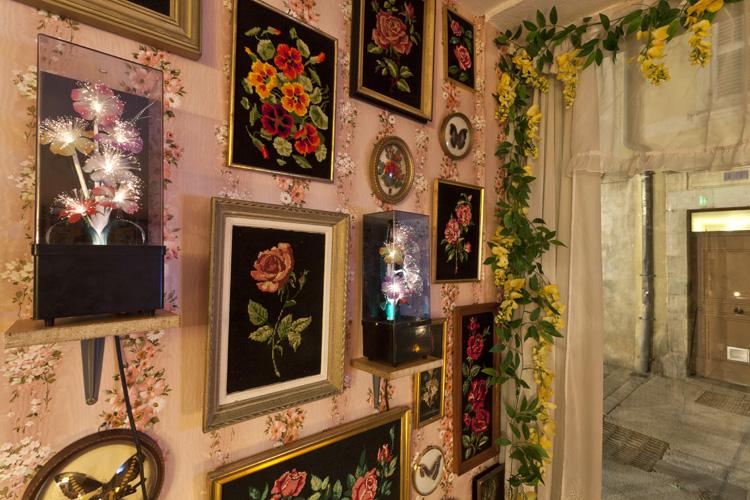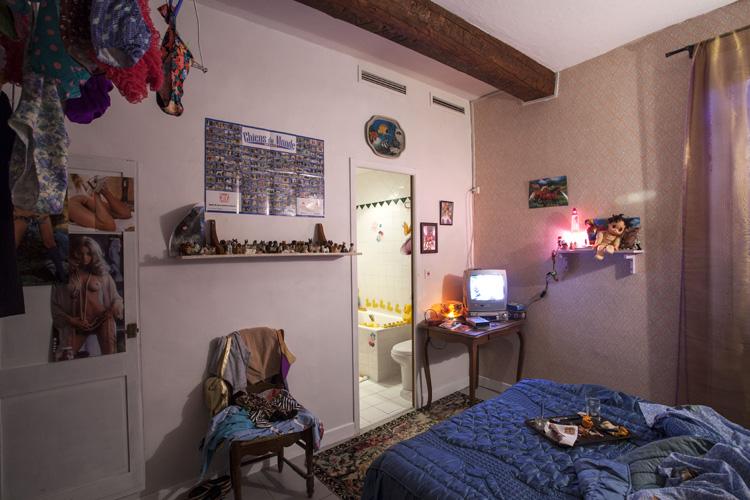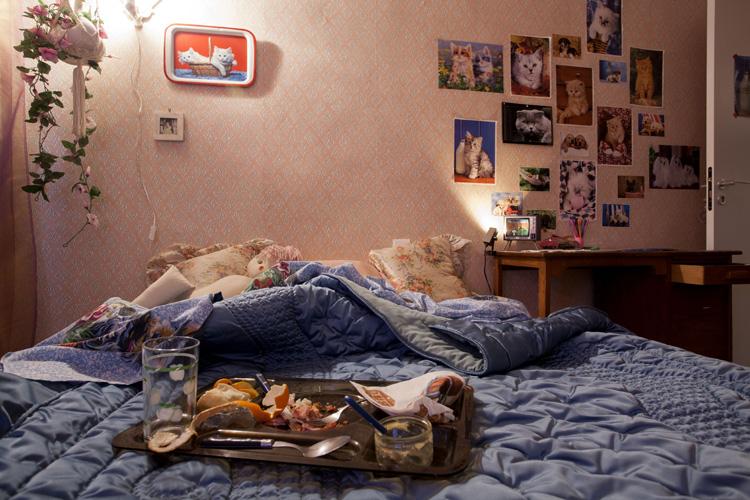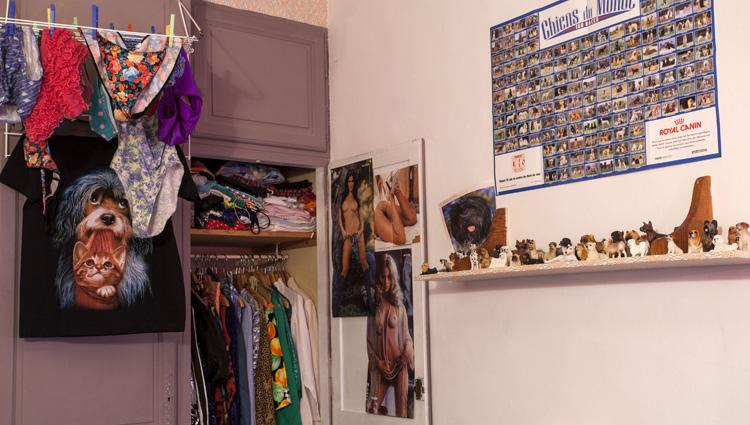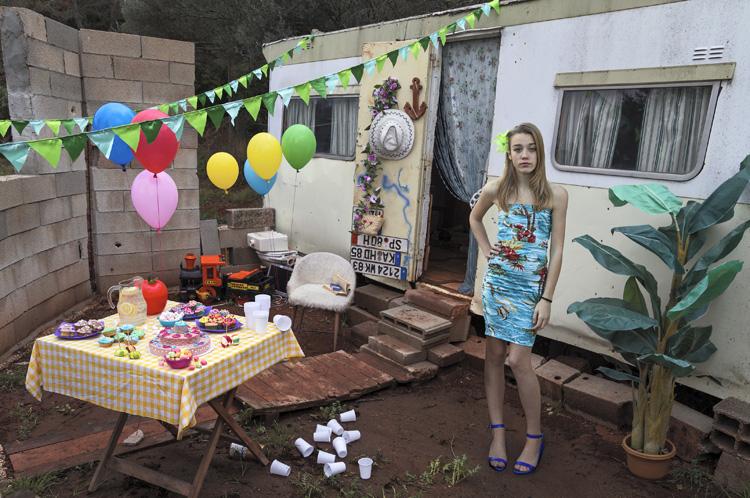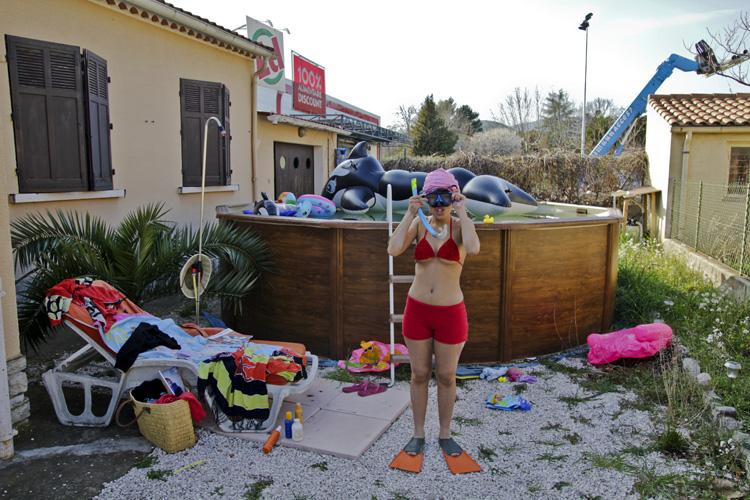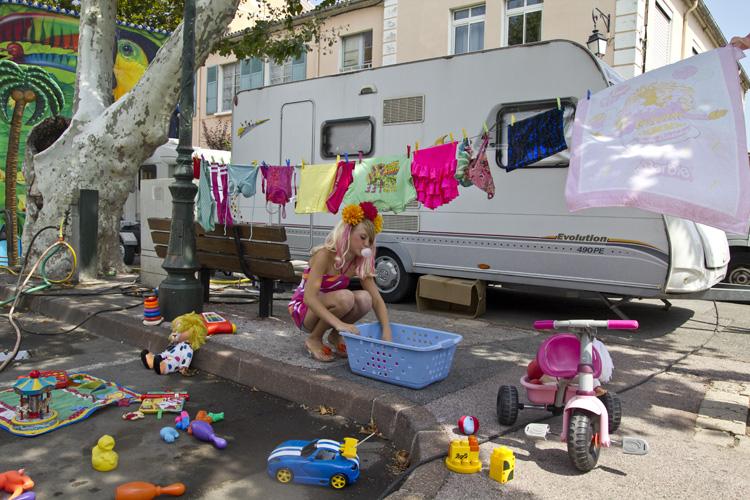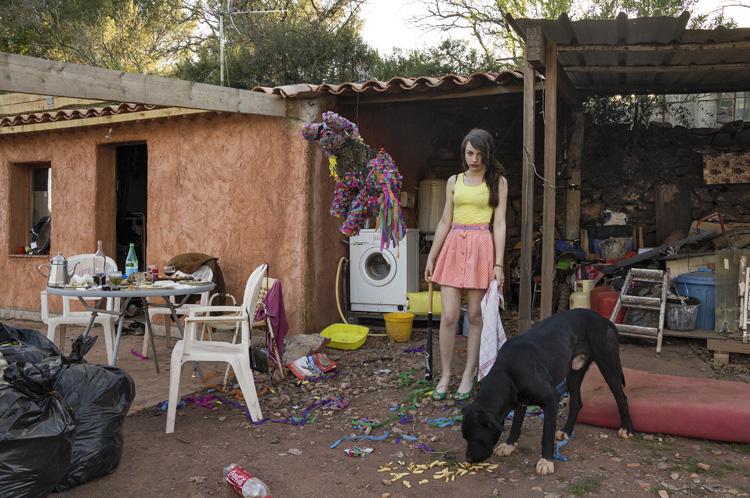Lena Durr
Objects and objections
Before being socially promoted through the figure of the collector, who is nowadays so quintessential that he calls the shots in aesthetic production, the collection was studied in the very early days of psychoanalysis as belonging to the large family of mental disorders and forms of alienation.
Henri Codet, who described in detail its challenges in his famous 1921 thesis, Essai sur le collectionnisme, came up with four distinctive signs: the desire for possession, the need for spontaneous activity, practice in excelling, and a tendency to classify things. We can contrast this description, which might almost pass for that of a sporting mania, with the more contemporary characteristics set forth on television by the Mon TOC reality TV series, involving a compulsive hoarder, which are the more the result of a disappearance of choice, and go hand in hand with a general lack of hygiene, forming together a layer of resistance with regard, every which way, to generalized consumer society, the sense of loss (social and individual), the depreciation of values, and the encouragement to lead a rational life triumphing over all affective investment. Lacan himself compared collecting “emotional anomalies and anomalies of impulse”.
The anecdote of the New Yorkers Langley and Homer Collyer survives, like the moral of a tale, to instruct the behaviour of those who refuse the normality of the throw-away cycle: barricaded in their 5th Avenue apartment block in 1917, the two brothers—the first a pianist and the second a lawyer specializing in maritime matters—lived in a state of reclusion, amassing possessions and rubbish, until Langley died in a tunnel of refuse, crushed by huge piles of newspapers falling on him as he took a meal to his brother, who was paralytic and blind, thus causing his death in April 1947.
STAYING WITH ANAPHORA
“Our objects are in fact the objects of a passion, that of private property”, according to Baudrillard’s thoroughly Lacanian words. In 1968, with the publication of Le Système des objets, criticism of the bourgeois mania for owning things made quite a stir: Boris Vian’s already acid Complainte du progrès, published in 1956, and Georges Perec’s placid Les Choses, which appeared in 1965, formed a background music which rooted in people’s consciousness the well-grounded ills of the mainsprings of our guilty attachment to accumulation and hoarding; Marco Ferreri’s film La Grande Bouffe, which was screened in Cannes in 1973, drove home the point.
The 1980s seemed to break with this radicalness: the Crisis, probably pivoting on the conservative and neo-liberal revolution ushered in by Ronald Reagan and Margaret Thatcher, spirited away the society of abundance for all, much lamented by the anti-capitalist protesters of the 1970s.
Dominated by a business élite personified by the yuppie, surfing on flows of capital, with his selective lifestyle and pared-down inner self, the new age hallowed collecting as the privilege of an educated and even cultivated class, raising its objects above the mass of products—and even devoting to collections a cult, provided that their objects were chosen, afunctional and distinctive by virtue of their habitus (one thinks in particular of the Christmas presents in Terry Gilliam’s film Brazil, which was released in 1985, and Patrick Bateman’s apartment in American Psycho, made by Brett Easton Ellis in 1991).
In her work, Léna Durr pinpoints the boundaries between maniacal distinction and any old kind of accumulation: by summoning collections of extremely eclectic objects, she puts her finger on a relation to the object which carries along with it, all at once, fear of dearth and love of gadgetry, the culture of the working classes and the artistic domain of the élites, and stacking and classifying.
It is hard to resist anaphora or repetition when we approach her work: the artist proceeds by way of inventory, and even inventories, and the particular artefacts she brings together are distributed in several ledgers.
In her thick volumes there follows—and the items almost resemble one another—a serried sequence of baby-doll nightgowns, parading alongside dolls, hunting trophies, candles in the image of saints, electronic menorahs, stars meant to decorate countless Christmas trees, and so on.
More than a register, whose vocabulary they borrow, the ledgers arrange a score, with each double page presenting an alignment and objects arrayed on a principle of repetition and variation. The eye is unable to dwell on any one of the elements, or any one of the series: the collector’s symphony calls for a whole orchestra, which is revealed little by little as the pages are turned.
If there is a methodical organization here, it in no way leads to a hierarchization: the sequels do not present any logic other than that of the facilitation of transitions from one series to the next, like a marabout-bit of string, and one form to the next, the function never holds sway over the aesthetic aspect, and the sacred character of the crucifixes, reproductions of icons and little bottles of holy water rubs shoulders in a thoroughly profane way with rubber elephants and a phosphorescent figurine of Alien.
The hyperchromy in which the vintage readily bedecks itself can, without mishap, match the whiteness of a plaster statuette, and the plastic can go hand-in-hand with the wood.
This afunctionality, this blindness to function, henceforth refers the objects to something other than their use as products, to borrow Baudrillard’s terminology, which makes a distinction between the way we use, let’s say, a hat, if we wear one to protect us from the sun, for example, and its possession, during which it is stored away, and removed from its use.
Baudrillard goes so far as to assert that a refrigerator used as a refrigerator can be called a refrigerator, whereas a collection of refrigerators turns it into an object.
DIVERSITY OF OBJECTS, ONENESS OF SUBJECT
Léna Durr’s toys—ducks, candles, leotards, statuettes, cuckoos, etc—are thus, in a way, dismembered, because, when removed from the world of utilization, they are amputated with regard to their use—but then to what are they re-membered? To what, or to whom, do they attach their existence in the world?
Disconnected from their respective functions which, if they represented the foundation of their status, prevented them from belonging to one and the same ensemble (why put a gourd and an ibex’s jaw side by side?), Léna Durr’s objects have become part of a system where the artist herself is the central star.
They become the objects-of-this-subject, and the artist transforms herself into a Midas turning everything she touches not into gold but into herself. In a way, as soon as they belong to her, they say more about her than about themselves.
It now seems important to emphasize that Léna Durr’s collections do not comply with any usual art project logic, in the sense that they have not been put together to make a work. They exist prior to the work and are ahead of it: by having surrounded herself with these objects for many years, she bargain-hunts them at garage sales, which she tirelessly scours. To put it in a nutshell, Léna Durr was a collector before being an artist. We might even conjecture that her artistic career serves as a taming or even a conspiracy of the affective bond she has with her collections.
If it is common to describe a collection as a passion, this notion refers etymologically to the irrepressible impulse, the disease, whose cause lies outside the person suffering from it.
Passion reigns as master to the point of putting life itself to the test—once again, in a social and philosophical context which places the free agent as a lofty and indisputable value, morality interferes with things that are not its business: whether we think of Sir Thomas Phillipps (who preferred to carry on buying manuscripts rather than looking after his wife) or the Collyer brothers, pathological collectors immediately seem to be the victims of their passions…
The text written by Léna Durr in 2017 to explain her praxis incidentally contains no less than 14 instances of personal pronouns and adjectives: “I”, “my”, “me” follow one another as if to guarantee the survival of the subject, or, better still, her sovereignty, faced with a surplus of objects.
In this tireless activity, what is involved, for Léna Durr, is surpassing herself rather than floating, in this instance going beyond her own passion, by making herself mistress of her collections—by appropriating them for herself.
Not as properties but, paradoxically, by pushing them beyond the perimeter of her life.
The German for object is Gegenstand, i.e. “was dagegen steht”, literally, what is opposite. Opposite, implicit, mirrored. A first motivation comes to light: by exhibiting her collections in the form of installations and books, Léna Durr removes the passion from them. They are no longer wholly private, insomuch as others can experience them, and even appropriate them. In full daylight.
In recent works, the artist focuses on bringing to life the collections of other people.
In 2016, she contacted a young man who had a fetish about balloons, and asked him to display his precious Eros on the bed in his boyhood bedroom. The resulting photograph,Thibault, resounds with an apparent human absence; in reality, the collector asserts his presence in it, in a metonymic way, through the objects he uses and fills with his desire.
At La Maison du Cygne, in 2017, she proposed a small book in which people could discover the sock collection of one of her girlfriends: devised as a flip book in which nothing or almost nothing moves, the book presents, in front of bathroom shelves filled with folded towels and hygienic products, calves clad, turn by turn, in each of the fetish possessions. Single pose, single décor, and someone taking the photos: the barrier of the private protecting the guilty pleasure of the exterior eye weakens, and the subject becomes subjective.
The Galinettes series pushes the mechanism to a paroxysm: what appears to be a series of portraits of women collectors (exclusively women) turns out in reality to be a recomposition, from scratch, of the affective attachment between a collector and his/her collection, with the characters having, in reality, no connection with the objects surrounding them. Through the interpolation of fiction, a social arrangement occupies the foreground and eclipses all biographical elements.
DEFENCE AND ILLUSTRATION
What is laid bare is the cultural, social and political fact which leads to promoting such and such a collection (the art collection in particular, at the top of the social pyramid), and depreciating another (plastic ducks, floral canvases, fibre optic lights). The separation between the noble and the kitsch—two cultures which seem made to clash with each other.
The challenge no longer weighs solely on the artist gone astray, deconstructing or resisting the industrial processes of creation and consumption, as portrayed by Allan McCollum, Andreas Gurski and Hassan Sharif, nor on his capacity to archive reality through its extensive verification (Bernd and Hilla Becher): the critical stratum of Léna Durr’s work accentuates and lends visibility to a split between cultures between which passages, nuances and transitions have been broken.
Léna Durr seems to thus give herself over to a questioning, in due form, of the dichotomy constructed between popular culture and erudite/highbrow culture; to this end, two notable mainsprings are used.
The first consists in removing collecting from the pathological category.
Léna Durr re-introduces the collection of secondhand objects coming from popular culture like a fact that is not individual (which would thus emerge from just the relation of a patient with a disorder or, at the very least, a guilty passion) but collective, referring to a social construct having as its object the distinction between classes of population, their codes and their values, their lifestyles and their emblems.
By shedding light less on the mechanisms (which she rigs, so to speak, by her presentations) than on the objects themselves, their accumulation and their system, she makes a transfer from the transitional object to the relational object.
The vocabulary of clinical psychology can from now on give way to the vocabulary used to convey the seemingly positive factors associated with collecting; the Appartement témoin and Chambre 15, installations, which simultaneously borrow the codes and terms of the suburban standard household and of the collector’s interior in a saturation akin to that proposed by Martin Parr in his Salons. These interiors can nevertheless be penetrated: transposed into an artistic context, and thereby attached to the domain of archetypal social valorization, they are open to the eye, and they display themselves.
As for the latter, it is based on the old age of the objects as a possible issue to the eternal present of postmodernism—the perspective of memory and the future.
So it is with these portraits in the Teenage, series, which challenge the mythology of the Lobster Complex: Julie, Melissa, Chloe and Lea, eye to eye, imitate the attitudes of infuriated teenagers in the middle of rubbish dumps which they seem to overlook.
If Baudrillard talks of a ‘historiality’ of the ancient object, combined with its authenticity, he reduces it to a regression. With Léna Durr, it is not a matter of returning to a psychologically oriented approach to the relation to the object: running counter to Baudrillard’s analysis, she reinstates the emancipatory and political dimension of kitsch as a collective phenomenon hailing from a value system legitimized by a social order which can be contested.
Further on, she selects her objects through reference to a past that has matured, that of the beginnings of the age of plastic. By assuming the industrial and mainstream origin of the object, she emphasizes that it has gone beyond that origin, and that it has survived pure use.
Léna Durr objects to the immutability of this social order by placing the possibility of an alternative at its centre.
The sequence might be summed up as follows: the ancient object involves a diachrony, because it comes from a past of which it is a survivor (its peers have been exhausted by their use, dispersed and destroyed: it is the witness to an earlier seriality and, as an exception, the sign of the extinction of the series—a piece of waste, in the archaeological sense). Having not been consumed, it once again questions the consumer society.
Its persistence lends it the status of proof of the passing of time and her work; through mirror effects, this vanity-like dynamic reflects on the owner of the ancient object: “Your singularty, to which I give substance, can only be conceived through me, and in a relative way, because I shall survive you the way I have survived my former masters.”
Léna Durr thus explores a metaxy or middle ground which she fills with meanings that are more laden with sense than it appears: the images, installations and situations which she creates, notwithstanding their deliberately fictional character, try to re-load the objects with their capacity to live together with the subjects, and even reflect their subjectness; in this face-to-face encounter in which forms of otherness are in no way exhausted, each item is invested with a power that goes beyond the mere affect: in her work, Léna Durr involves the aleph of objects for unfolding their metonymy, between them and with those which fix them to their sides, to remove them all from their claimed, and quite convenient, inertia.
Translated by Simon Pleasance
